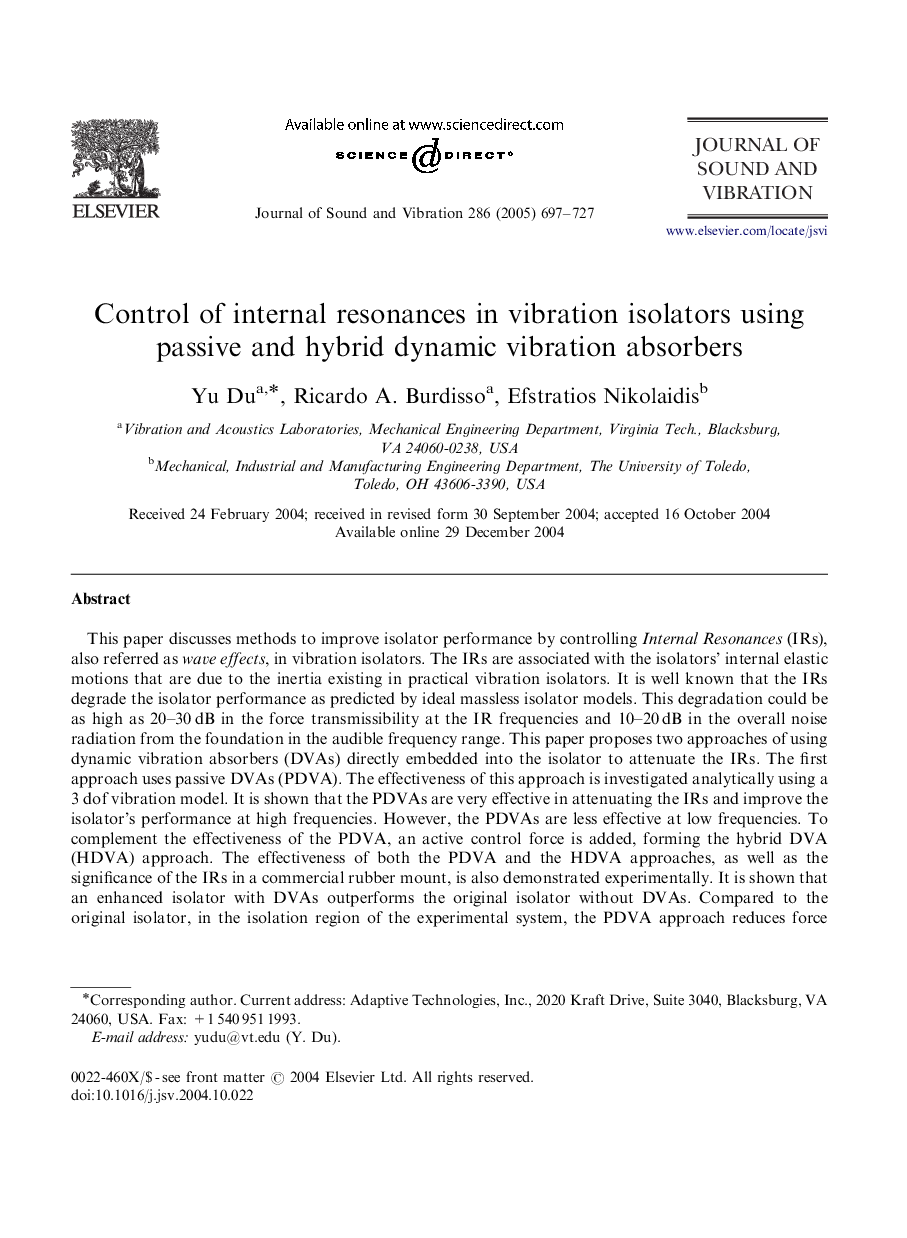| Article ID | Journal | Published Year | Pages | File Type |
|---|---|---|---|---|
| 9640346 | Journal of Sound and Vibration | 2005 | 31 Pages |
Abstract
This paper discusses methods to improve isolator performance by controlling Internal Resonances (IRs), also referred as wave effects, in vibration isolators. The IRs are associated with the isolators' internal elastic motions that are due to the inertia existing in practical vibration isolators. It is well known that the IRs degrade the isolator performance as predicted by ideal massless isolator models. This degradation could be as high as 20-30Â dB in the force transmissibility at the IR frequencies and 10-20Â dB in the overall noise radiation from the foundation in the audible frequency range. This paper proposes two approaches of using dynamic vibration absorbers (DVAs) directly embedded into the isolator to attenuate the IRs. The first approach uses passive DVAs (PDVA). The effectiveness of this approach is investigated analytically using a 3 dof vibration model. It is shown that the PDVAs are very effective in attenuating the IRs and improve the isolator's performance at high frequencies. However, the PDVAs are less effective at low frequencies. To complement the effectiveness of the PDVA, an active control force is added, forming the hybrid DVA (HDVA) approach. The effectiveness of both the PDVA and the HDVA approaches, as well as the significance of the IRs in a commercial rubber mount, is also demonstrated experimentally. It is shown that an enhanced isolator with DVAs outperforms the original isolator without DVAs. Compared to the original isolator, in the isolation region of the experimental system, the PDVA approach reduces force transmissibility by 18.5% and overall noise radiation by 4.3Â dB. The HDVA approach reduces the force transmissibility and radiated noise by 92.2% and 9.1Â dB, respectively.
Related Topics
Physical Sciences and Engineering
Engineering
Civil and Structural Engineering
Authors
Yu Du, Ricardo A. Burdisso, Efstratios Nikolaidis,
